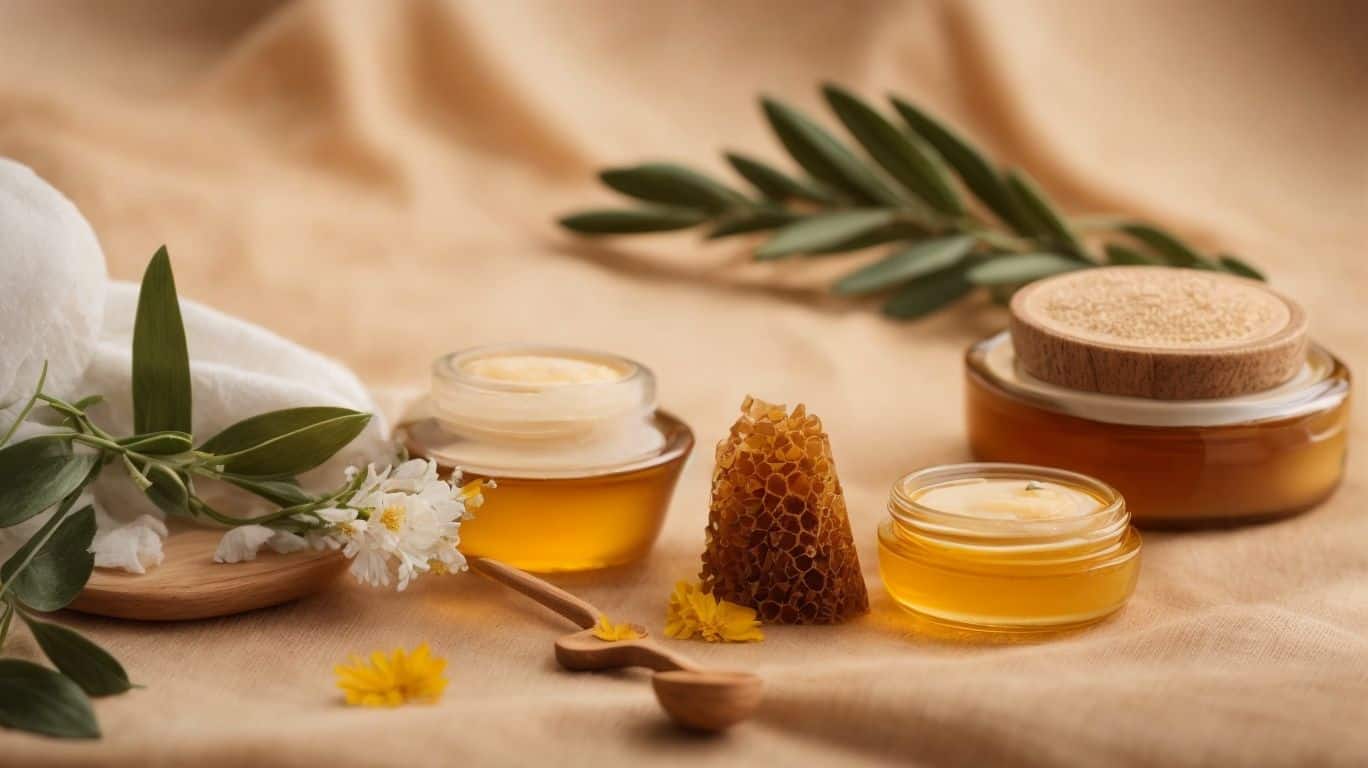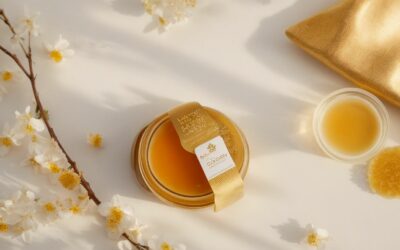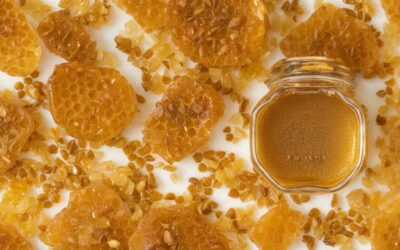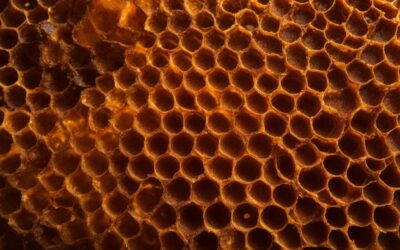Are you tired of dealing with dry, flaky skin? Look no further than this DIY Manuka honey skin balm recipe. Dry skin can be a frustrating and uncomfortable issue, but with this easy and all-natural solution, you can say goodbye to dryness and hello to smooth, hydrated skin.
What Are the Benefits of Manuka Honey for Dry Skin?
Manuka honey has been used for centuries in traditional medicine, particularly for its healing properties. In recent years, it has gained popularity as a natural remedy for various skin conditions. I
n this section, we will delve into the specific benefits of manuka honey for the skin.
From its anti-inflammatory properties to its antibacterial and moisturizing effects, we will explore how this powerful ingredient can improve the health and appearance of your skin.
1. Anti-inflammatory Properties
Manuka honey is well-known for its anti-inflammatory properties, making it a great option for various skin conditions and irritations. To fully benefit from its anti-inflammatory effects on the skin, follow these steps:
- Start by cleansing your skin thoroughly with a gentle cleanser.
- Next, apply a thin layer of manuka honey skin balm to the affected area.
- Gently massage the balm into your skin using circular motions.
- Leave the balm on for at least 20 minutes to allow the anti-inflammatory properties to work.
- Rinse off the balm with lukewarm water and gently pat your skin dry.
- For optimal results, repeat this process twice daily.
Adding manuka honey to your skincare routine can bring relief from inflammation and promote healthier, calmer skin. Give it a try and experience the benefits for yourself!
2. Antibacterial and Antimicrobial Properties
Manuka honey is renowned for its potent antibacterial and antimicrobial properties, making it a valuable asset for maintaining healthy skin.
These properties effectively combat bacteria, prevent infections, and promote wound healing. Here are some key points to know about Manuka honey’s antibacterial and antimicrobial properties:
- 1. Effective against bacteria: Research has shown that Manuka honey displays strong antibacterial activity against a variety of bacteria strains, including those that are resistant to antibiotics.
- 2. Antimicrobial action: The presence of hydrogen peroxide, methylglyoxal (MGO), and other bioactive compounds in Manuka honey contribute to its antimicrobial properties. These compounds work to inhibit the growth of microbes.
- 3. Wound healing properties: The antibacterial and antimicrobial effects of Manuka honey aid in preventing infections in wounds, reducing inflammation, and promoting the healing process.
- 4. Skin conditions: Due to its ability to fight bacteria and reduce inflammation, Manuka honey can be beneficial for various skin conditions such as acne, eczema, and dermatitis.
By incorporating Manuka honey into your skincare routine, you can harness its powerful antibacterial and antimicrobial properties for healthier skin.
3. Moisturizing and Hydrating Effects
The moisturizing and hydrating effects of Manuka honey make it a beneficial ingredient for skincare. Here are the steps to create a DIY Manuka honey skin balm:
- Gather your ingredients, including Manuka honey, coconut oil, and essential oils.
- Mix the Manuka honey and coconut oil together in a bowl.
- Add a few drops of your chosen essential oils for added benefits and fragrance.
- Stir the mixture until well combined and smooth.
- Transfer the balm into a clean, airtight container for storage.
To use the Manuka honey skin balm:
- Cleanse your skin thoroughly.
- Apply a thin layer of the balm to your face or body.
- Gently massage the balm into your skin in circular motions.
Remember to do a patch test before using the balm to check for any allergic reactions or irritation. Store the balm in a cool, dry place to maintain its effectiveness.
Enjoy the moisturizing and hydrating effects of this DIY Manuka honey skin balm recipe for dry skin.
How To Make a DIY Manuka Honey Skin Balm?
Creating a DIY Manuka Honey Skin Balm is a straightforward process that only requires a few steps. Follow these instructions to make your own nourishing skin balm:
- Gather the necessary ingredients: Manuka honey, coconut oil, shea butter, and optional essential oils.
- Melt the coconut oil and shea butter using a double boiler or microwave.
- Combine the Manuka honey with the melted mixture and mix well.
- If desired, add a few drops of your preferred essential oils for a pleasant scent.
- Pour the mixture into a clean container and allow it to cool and solidify.
- Your DIY Manuka Honey Skin Balm is now ready to be used. Apply it to dry skin areas for moisturization and healing benefits.
What Ingredients Do You Need?
To create your own DIY Manuka honey skin balm, you will need a few essential ingredients. These include:
- Manuka honey: It is important to use high-quality honey with a high Unique Manuka Factor (UMF) to reap maximum benefits.
- Carrier oil: Choose from oils such as almond, jojoba, or coconut to dilute the honey and provide extra hydration.
- Beeswax: This ingredient helps solidify the balm and gives it a smooth texture.
- Essential oils: While optional, essential oils like lavender or tea tree can add fragrance and therapeutic properties to the balm.
- Vitamin E oil: This acts as a natural preservative and provides antioxidants for nourishing the skin.
By combining these ingredients, you can create a moisturizing and healing balm for dry skin. Experiment with different ratios to find the perfect consistency for your needs. Remember to store the balm in a cool, dry place to prolong its shelf life.
Show your skin some love with this easy and effective DIY Manuka honey skin balm recipe!
Step-by-Step Instructions
Creating a DIY Manuka Honey Skin Balm involves following these step-by-step instructions:
- Gather all of the necessary ingredients for the balm.
- Mix the Manuka honey with other moisturizing ingredients such as shea butter and coconut oil.
- Heat the mixture on low heat until it has melted and blended together.
- Remove the mixture from heat and allow it to cool slightly.
- Transfer the mixture into a clean container and let it solidify.
To use the Manuka Honey Skin Balm, follow these steps:
- Begin by cleansing your skin.
- Apply a thin layer of the balm to the desired areas.
- Gently massage the balm into your skin until it has been fully absorbed.
By following these step-by-step instructions, you can easily create and use your own Manuka Honey Skin Balm to experience its numerous skincare benefits.
How To Use the Manuka Honey Skin Balm?
Now that you have your homemade Manuka honey skin balm, it’s time to learn how to use it for maximum benefits. We’ll go over the simple steps to incorporate this balm into your skincare routine and achieve hydrated, nourished skin.
First, we’ll discuss how to properly cleanse your skin before applying the balm. Then, we’ll cover the technique for applying the balm and the key areas to focus on. Finally, we’ll talk about the importance of massaging the balm into your skin for optimal absorption and results.
1. Cleanse Your Skin
Cleansing your skin is an important step in any skincare routine. Here is a step-by-step guide to effectively cleanse your skin:
- Start by wetting your face with lukewarm water.
- Apply a gentle cleanser suitable for your skin type.
- Gently massage the cleanser onto your face using circular motions.
- Pay extra attention to areas prone to oiliness or blemishes.
- Rinse off the cleanser with lukewarm water, ensuring all product is removed.
- Pat your face dry with a clean towel. Avoid rubbing, as it can irritate the skin.
Cleansing your skin helps remove dirt, oil, and impurities, allowing your skincare products to penetrate better and work more effectively. It also helps maintain a clean and healthy complexion.
2. Apply the Balm
Pro-tip: For best results, apply the Manuka honey skin balm twice daily, in the morning and before bed. This will ensure maximum hydration and nourishment for your skin. Don’t forget to follow the step of applying the balm to see the best results.
- Cleanse your skin thoroughly to remove any dirt or impurities.
- Take a small amount of the Manuka honey skin balm using clean fingers or a spatula.
- Apply the balm onto your face or any other desired areas.
- Gently massage the balm into your skin using circular motions until it is fully absorbed.
3. Massage the Balm into Your Skin
- Ensure your skin is clean and dry before applying the balm.
- Scoop a small amount of the balm onto your fingertips.
- Gently massage the balm into your skin using circular motions.
- Pay extra attention to areas that need more hydration or have specific concerns.
- Continue massaging for a few minutes to allow the balm to penetrate deeply.
- Massage the balm into your skin, focusing on areas that need extra nourishment.
- Allow the balm to fully absorb into your skin before applying any other products.
- Use the balm daily or as needed to keep your skin moisturized and nourished.
Are There Any Side Effects of Using Manuka Honey on Skin?
While Manuka honey has become a popular ingredient in skincare, it’s important to consider any potential side effects before using it on your skin. In this section, we will discuss two potential side effects of using Manuka honey on the skin: allergic reactions and irritation or sensitivity. By understanding these risks, you can make an informed decision about whether or not Manuka honey is the right choice for your skincare needs.
1. Allergic Reactions
Allergic reactions to manuka honey on the skin can occur in some individuals. It is important to be aware of this potential side effect when using manuka honey as a skincare ingredient. If you experience an allergic reaction, follow these steps:
- Stop using the manuka honey balm immediately.
- Wash the affected area with mild soap and water.
- If the reaction persists or worsens, seek medical attention.
- Inform your healthcare provider about your allergy to manuka honey.
True story: A friend of mine with sensitive skin tried using a manuka honey balm and experienced redness and itching. They followed the steps above and consulted a dermatologist, who recommended alternative skincare options. It’s important to listen to your body and seek professional advice when dealing with allergic reactions.
2. Irritation or Sensitivity
When using Manuka honey on the skin, it’s important to be aware of the potential for irritation or sensitivity. Here are some key points to consider:
- Perform a patch test: Before applying Manuka honey to your entire face or body, test a small area of skin to check for any irritation or sensitivity.
- Monitor for redness or itching: If you experience any redness, itching, or discomfort after using Manuka honey, discontinue use immediately.
- Consult a dermatologist: If you have a history of sensitive skin or allergies, it’s best to consult with a dermatologist before incorporating Manuka honey into your skincare routine.
How To Store the Manuka Honey Skin Balm?
Proper storage of your homemade Manuka honey skin balm is crucial to maintaining its quality and effectiveness. Follow these steps to store it correctly:
- Transfer the balm into a clean, airtight container, preferably made of glass or PET plastic.
- Make sure the container is completely dry before transferring the balm to prevent moisture buildup.
- Store the container in a cool, dry place away from direct sunlight, as exposure to heat and light can degrade the balm.
- Keep the container tightly sealed to prevent air from entering, which can cause oxidation and spoilage.
- Label the container with the date of preparation to keep track of its freshness.
Pro-tip: To extend the shelf life of your Manuka honey skin balm, consider storing smaller portions in individual containers and keeping them in the refrigerator. This will help preserve its potency and prevent bacterial growth.
Frequently Asked Questions
1. What is the benefit of using a DIY Manuka Honey Skin Balm for dry skin?
DIY Manuka Honey Skin Balm is a natural and effective way to moisturize and heal dry skin. Manuka honey is known for its antibacterial and anti-inflammatory properties, which can help soothe and hydrate dry skin.
2. What ingredients do I need to make a DIY Manuka Honey Skin Balm?
The main ingredients you will need for this recipe are coconut oil, shea butter, beeswax, and Manuka honey. You can also add in essential oils for added benefits and fragrance.
3. How do I make the DIY Manuka Honey Skin Balm?
To make the DIY Manuka Honey Skin Balm, melt the coconut oil, shea butter, and beeswax together in a double boiler. Once melted, let it cool for a few minutes before adding in the Manuka honey. Pour the mixture into a container and let it solidify before using.
4. Can I customize this DIY Manuka Honey Skin Balm for specific skin concerns?
Yes, you can customize this recipe to suit your specific skin concerns. For example, adding in lavender essential oil can help with calming and soothing irritated skin, while tea tree oil can help with acne-prone skin.
5. How often should I use the DIY Manuka Honey Skin Balm?
You can use the DIY Manuka Honey Skin Balm as often as needed. For best results, apply it to dry skin areas at least twice a day, in the morning and before going to bed.
6. How should I store the DIY Manuka Honey Skin Balm?
Store the DIY Manuka Honey Skin Balm in an airtight container or jar at room temperature. Avoid exposing it to direct sunlight or heat, as this can cause the balm to melt or change consistency.
I’m a Manuka honey enthusiast and creator of Manuka Honey Organic, a blog where I share my journey with authentic Manuka honey from New Zealand. I want everyone to learn about the healing powers of Manuka honey.





